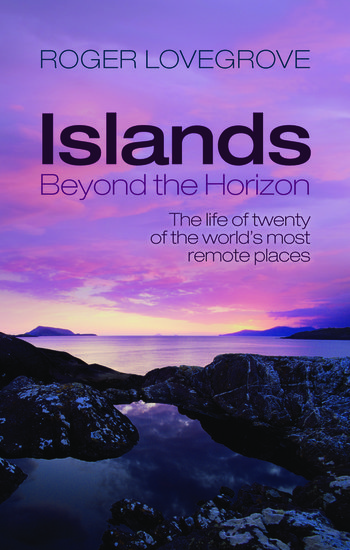The Telegraph Hay Festival is taking place from 23 May to 2 June 2013 on the edge of the beautiful Brecon Beacons National Park. We’re delighted to have many Oxford University Press authors participating in the Festival this year. OUPblog will be bringing you a selection of blog posts from these authors so that even if you can’t join us in Hay-on-Wye, you won’t miss out. Don’t forget you can also follow @hayfestival and view the event programme here.Roger Lovegrove will be appearing at The Telegraph Hay Festival on Thursday 30 May 2013 at 10am to explore some of the remotest places on earth. More information and tickets.
By Roger Lovegrove
The ineffable magic of a distant island! There is an irresistible lure even in fanciful images of distant islands: they are isolated morsels of land, far out in the wide reaches of oceanic isolation, tiny islands in tiny worlds of their own. The mind’s eye may dwell on the image of what life is like in such places, or even what emotions could be engendered by a cursory visit. However, the reality and actuality of what it means to escape to, or dwell on, such islands will remain alluring until we feel the tread of our feet on lonely land. Until then such islands hover tantalisingly out of our reach.
The oceans are dotted with these scattered fragments of land, most small, some very small. One small collection of Atlantic rocks supports a tiny permanent, albeit rotating, population despite being occasionally inundated and storm lashed. Each island is a self-contained world of its own, unique unto itself. The great majority of these oceanic worlds are of submarine volcanic origin. Atolls, legendary tropical coral paradises, are merely the remaining encircling necklaces of long lost volcanoes, eaten away by time and the sea until their final vestiges have sunk once more below the waves. All support thriving wild life communities, unrepeated elsewhere, however sparse or verdant, even those rocks periodically immersed.
Many islands support species which are endemic to each individual island: plants which have been wind-drifted there over the eons since the islands’ first appeared above the sea surface, and reptiles as flotsam passengers from far away. Land birds too, at some stage have been transported by the fortune of wind or misdirection and remain stranded on many islands, remote from their places of origin. Gradually, over time such accidental immigrants evolve and obey Darwin’s rules and speciate through natural selection, becoming distinct from their historic parent stock and adding immensely to the biodiversity of the planet. Tragically many such species have since become extinct through the arrival and thoughtlessness of Man.

It was the great age of European exploration in the fifteenth and sixteenth centuries that began to chart some of the remote islands in the Atlantic, Indian, and Pacific oceans. Ascension was discovered in 1501 and Tristan only five years later. Other discoveries continued across the years right up to the time in 1935, when the location of an outlying atoll in the Tuamotu Archipelago in the far reaches of the central Pacific was the final piece in the jigsaw completing the geography of the planet’s islands.
Remoteness is a subjective concept. Tristan da Cunha, 2000 miles from the nearest land is unquestionably remote but, so too in the human mind, is somewhere such as St Kilda, stormbound for much of the year and deeply frustrating for many who make serial futile attempts to land. Many of the remote islands have names that resonate with the magic of their calling: Mingulay, Fernando de Noronha, San Blas, Yap, Isleaux Aigrettes. Some unwittingly betray the story of their past or act as constant reminders of the sadness of past use: Devil’s Island, Solovetski, St Kilda. Wherever they are, whatever their story, they maintain their inescapable magic.
Roger Lovegrove is the author of Islands Beyond the Horizon: the life of twenty of the world’s most remote places — a personal account of distant islands he has visited from Arctic to Antarctic and tropics to temperate seas in the northern hemisphere. He was director of the RSPB in Wales for 25 years, is widely travelled, and was awarded the OBE for services to wildlife conservation in 1997.
Subscribe to the OUPblog via email or RSS.
Subscribe to only geography articles on the OUPblog via email or RSS.
Image credit: Polar bear photograph © Roger Lovegrove. All rights reserved.



Recent Comments
There are currently no comments.